 Self Portrait: Three Lucky Pennies, acrylic on canvas, 8 x 8 x 1.5 inches, 2010
Self Portrait: Three Lucky Pennies, acrylic on canvas, 8 x 8 x 1.5 inches, 2010
Three Lucky Pennies will be in the annual Small Works show at JRB Art Gallery at the Elms in Oklahoma City (map link) for the month of November 2010. The opening reception is Friday, November 5th, 6-10 pm.
The Small Works show at JRB will feature 100 8x8-inch canvases by 100 artists, each piece priced at $180.00. Artists Skip Hill, Nick Wu, Carlos Tello and Sohail Sheheda will be featured in the gallery's other spaces.
Here's a look at how I created this piece.
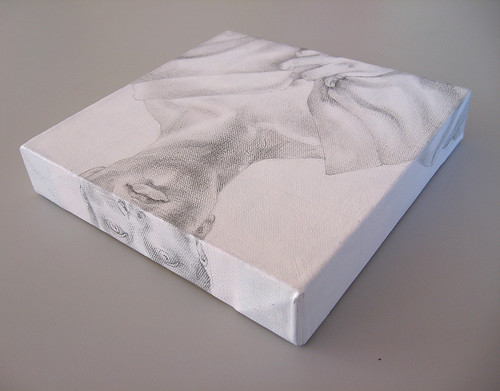
The idea for this self portrait popped into my head a couple of weeks ago. I imagined a ratty, thrift-store leopard-print coat, but that item seems to be missing from my closet. I took reference photos of myself wearing this wonderful purple kimono that my Mom has had for years. I settled on the two best shots, and spliced them together in PhotoShop.
I always enjoy painting the edges of a canvas. Luckily, the canvases this gallery provides for the Small Works show have lovely 1.5" edges. Using Adobe InDesign, I created a grid and placed my reference photo under it. This is a useful tool when working from a single reference.
This is an unofficial companion to my painting for 2009's Small Works show. I like to see what I can squeeze onto the edge.
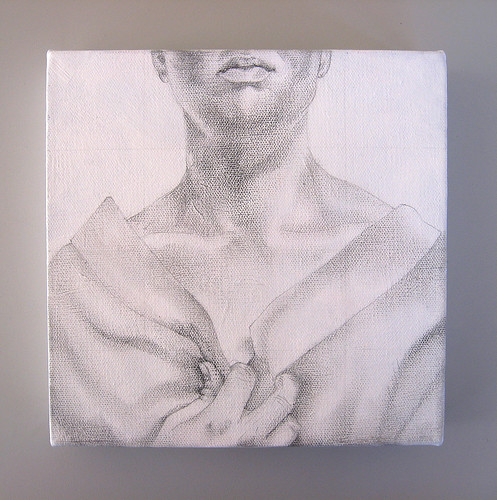
I had to turn this painting around in just a couple of days, so I knew that a good underdrawing would be key. I couldn't afford to take time working all the shadows out in paint alone. I often do underdrawings in graphite, and I prefer not to use spray fixative because it's water-resistant and stinky. Here I've blended the shadows using my finger, from which a small amount of skin oil helps the graphite adhere to the canvas. When I put the first wash down, I do it gently, so as not to smear the drawing. One acrylic wash seals it.
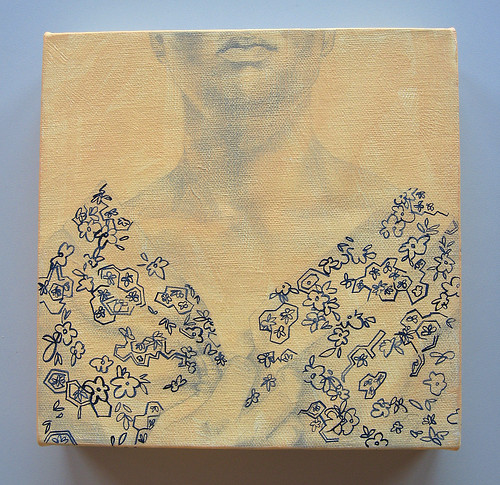
Usually I put down a burnt sienna or pepto-bismol-pink wash for figure painting, but I pictured this piece with yellow undertones. The wash here is a mixture of Naples yellow and a cadmium-based pale pink.
When painting patterns, I prefer a loose interpretation to a slavish reproduction. I drew the pattern on the canvas in pencil, mostly not looking at what I was drawing. (I love drawing blind.) I went over the lines using Payne's gray and a #1 liner brush.

I put in the big shadows with Payne's gray (how I love thee), and began blocking in the skin tones with quinacradone violet, napthol red, titanium white, Indian yellow, Naples yellow, Pyrrole red, light umber, and burnt sienna. These days I'm using a lot of Golden Fluid Acrylics, recommended to me by professor Bob Dorsey for their high pigment concentration and versatility. He also recommends Windsor Newton Series 7 brushes, which are indeed "worth every penny."

Here I've added washes of quinacradone violet and more Payne's gray to the robe. Continuing to block in the skin tones. The background is tinanium white with just a drop of Payne's gray to cool it off, and contrast with the warmth of the figure. I laid it on thick, allowing hints of the yellow underpainting to show through.
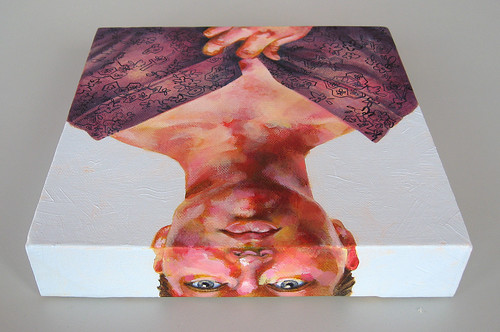
To finish, I overglazed the skin with more titanium white, napthol red tint, and Naples yellow, using some Golden glazing medium in yellow ochre and iridescent red. More glazes of quinacradone violet were added to the robe.
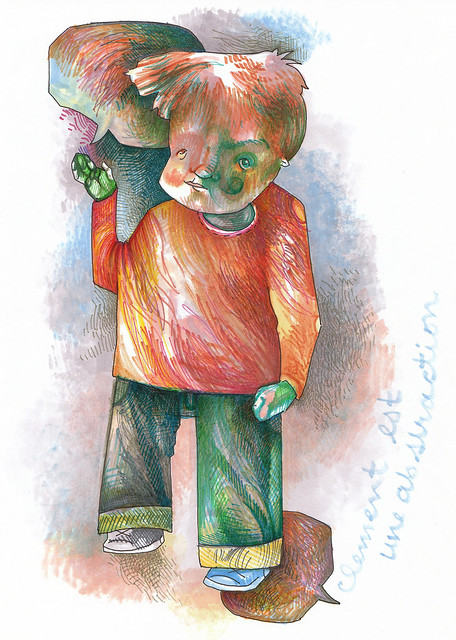 Clement Gets Abstract, ink on paper, 2008 by Sarah Atlee. Some rights reserved.
Clement Gets Abstract, ink on paper, 2008 by Sarah Atlee. Some rights reserved. Self Portrait: Three Lucky Pennies, acrylic on canvas, 8 x 8 x 1.5 inches, 2010
Self Portrait: Three Lucky Pennies, acrylic on canvas, 8 x 8 x 1.5 inches, 2010





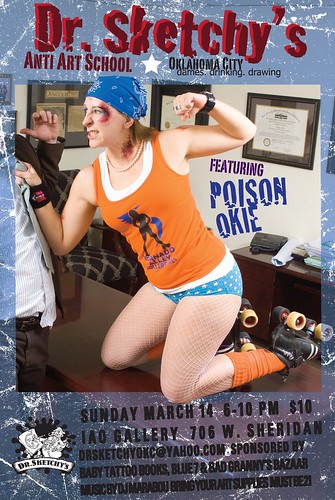
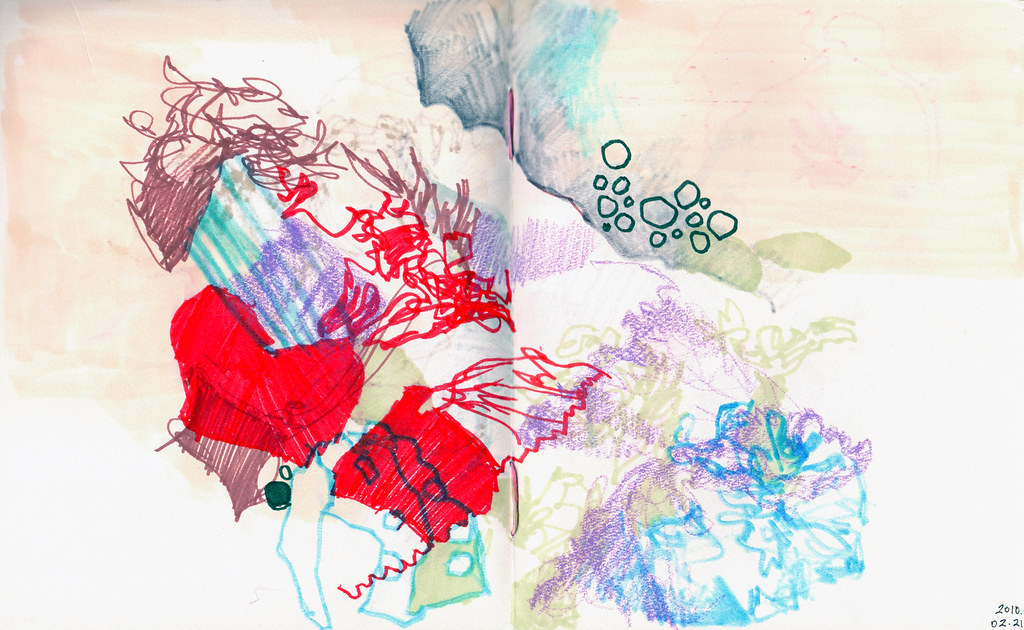
 Tonight's session will feature
Tonight's session will feature